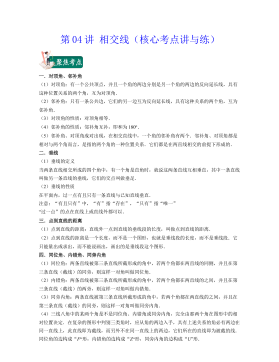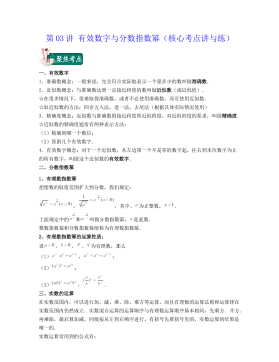传递成本、空间非一体化与城市经济结构转变
VIP免费
浙江财经学院硕士学位论文
I
摘要
科技进步促进了分工的深化,改变了厂商的生产组织方式,传统的空间上一
体化的组织方式逐渐转变为非一体化,这种转变深刻影响了城市经济集聚的方式
和城市经济结构。本文在新经济地理学的分析框架下,试图从经济活动的微观基
础——厂商出发,揭示城市经济结构转变的趋势和原因,并做实证分析。本文首
先构造了一个统计指标来衡量城市生产性服务业与制造业的相对集聚度,利用
2003-2008 年东部地区 100 个城市的数据,并且将所有城市分为三个层级,分别
计算各层级城市各年生产性服务业与制造业的相对集聚度。我们发现上海、北京
等核心城市生产性服务业相对于制造业集聚的趋势显著,与此相反,外围城市制
造业相对于生产性服务业集聚的趋势显著,外围城市逐渐成为制造业中心。之后,
本文借鉴 Gilles Duranton 和 Diego Puga(2005)的研究思路试图给予解释,但与
他们的研究不同的是,在解释厂商选择空间非一体化的原因时,结合我国的现实,
本文不仅考虑总部成本的因素,也考虑生产部门成本的因素。本文认为当传递成
本(包括总部服务的信息传递成本和生产部门运输成本)较高时,厂商将总部和
生产部门置于同一个城市;与此相反,当传递成本较低时,厂商将总部置于生产
性服务业集聚的少数核心城市,把生产部门置于拥挤成本较小的外围城市。大量
厂商选择同样的组织方式,影响了城市的就业格局及经济结构,总部和生产性服
务业集聚于少数核心城市,制造业集聚于中小城市。最后,对不同类型城市经济
结构转变的影响因素进行了实证分析。
本文的主要结论是:(一)信息传递成本降低显著促进了核心城市生产性服务
业的集聚,运输成本降低促进了外围城市制造业集聚,但对核心城市的经济集聚
没有显著影响;(二)外商直接投资促进了核心城市和外围城市制造业的集聚,反
映了东部地区吸收的 FDI 多流向制造业,促进了东部沿海省份的工业集聚;(三)
人力资本变量对核心城市生产性服务业的集聚和外围制造业集聚没有显著影响,
反映了我国的工业化进程还处于比较初级的阶段,对人力资本的要求不高。
关键词:信息传递成本;运输成本;空间非一体化;城市经济结构
浙江财经学院硕士学位论文
II
ABSTRACT
Scientific and technological progress promotes the division of labor and has
changed the organizational form by firms, from the traditional spatially integrated
organizational form into a multi-location organizational form. This change profoundly
affects the employment patterns of cities and the way urban economic agglomeration.
In this paper, we trying to reveal the trend of urban economic structural changes and
causes from the micro-foundation of economic activities - firms in the framework of
the New Economic Geography, and finally we give the empirical analysis. Firstly, we
construct a statistical indicator to measure the relative agglomeration degree of
producer services versus the manufacturing sector. We have 100 cities in the eastern
region as the samples, and divide all cities into three levels, then we calculate the
relative agglomeration degree of each level cities from 2003 to 2008. We found that the
agglomeration trend of producer services relative to manufacturing sector is
significantly in the core city, on the contrary, the agglomeration trend of manufacturing
sector relative to producer services is significantly in the peripheral city, the peripheral
city is becoming manufacturing center. Then we draw the research idea of Gilles
Duranton and Diego Puga (2005) to explain the phenomenon. But we consider not only
the cost of transmitting information of headquarters, but also consider the
transportation costs of production plant. This paper argues that when the delivery costs
of headquarter services and transport costs of production plant is higher, the firms
remain integrated. In contrast, when the delivery costs of headquarter services and
transport costs of production plant is low enough, firms will choose multi-location
organization form, production plant will place in the peripheral city, the headquarters
cluster in core city. A large number of firms choose the same organization form,
affecting the city's employment patterns and economic structure, headquarters and
producer services cluster in a small number of core cities, manufacturing cluster in
small and medium cities. Finally, we do the empirical analysis.
The main conclusions are: (a) the decrease of information transfer costs promotes
the agglomeration of producer services for the core city significantly, the reduce of
transport costs promotes the manufacturing agglomeration for peripheral city, but does
not affect the agglomeration of producer services for the core city; (b) Foreign Direct
Investment promotes the manufacturing agglomeration fore both core cities and
peripheral cities, reflects the FDI absorbed by the eastern region flows meanly into
浙江财经学院硕士学位论文
III
manufacturing sector, promoting industrial agglomeration of the eastern coastal
provinces; (c) human capital variables do not significantly affect the producer services
agglomeration in the core city either manufacturing concentration in peripheral city,
reflects the process of industrialization in China is still in relatively low stage and less
demanding of human capital.
Key words: transmission cost for headquarter services; transport costs; spatially
multi-location organization; urban economic specialization
浙江财经学院硕士学位论文
IV
目录
导言
...............................................................................................................................1
第一章 相关研究综述.....................................................................................................5
第一节 城市产业集聚的传统理论背景.................................................................5
第二节 城市产业集聚理论的进一步发展.............................................................7
第三节 相关实证研究.............................................................................................8
第二章 城市经济结构转变趋势:特征性事实...........................................................13
第一节 统计指标的说明.......................................................................................13
第二节 数据选取...................................................................................................14
第三节 城市分类与计算结果...............................................................................14
第四节 对计算结果的分析...................................................................................18
第三章 城市经济结构转变:基于 Duranton-Puga 模型的一个解释...................... 20
第一节 模型的设定...............................................................................................21
第二节 均衡时城市类型和城市规模...................................................................26
第三节 城市经济结构的转变...............................................................................31
第四章 城市经济结构转变的实证分析.......................................................................35
第一节 建立研究假设...........................................................................................35
第二节 计量方法...................................................................................................35
第三节 数据来源和模型设定...............................................................................36
第四节 变量的选择...............................................................................................36
第五节 计量结果分析...........................................................................................39
第五章 主要研究结论及政策建议...............................................................................45
第一节 主要研究结论...........................................................................................45
第二节 政策涵义...................................................................................................45
参考文献.........................................................................................................................47
附录
.............................................................................................................................51
致谢
.............................................................................................................................52
摘要:
展开>>
收起<<
浙江财经学院硕士学位论文I摘要科技进步促进了分工的深化,改变了厂商的生产组织方式,传统的空间上一体化的组织方式逐渐转变为非一体化,这种转变深刻影响了城市经济集聚的方式和城市经济结构。本文在新经济地理学的分析框架下,试图从经济活动的微观基础——厂商出发,揭示城市经济结构转变的趋势和原因,并做实证分析。本文首先构造了一个统计指标来衡量城市生产性服务业与制造业的相对集聚度,利用2003-2008年东部地区100个城市的数据,并且将所有城市分为三个层级,分别计算各层级城市各年生产性服务业与制造业的相对集聚度。我们发现上海、北京等核心城市生产性服务业相对于制造业集聚的趋势显著,与此相反,外围城市制造业相...
相关推荐
-
跨境电商商业计划书模版VIP免费
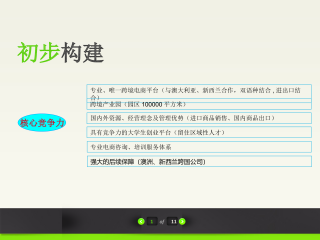
 2025-01-09 27
2025-01-09 27 -
跨境电商方案范文VIP免费
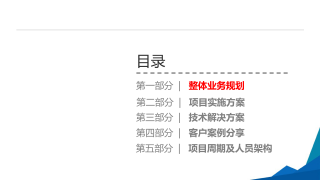
 2025-01-09 14
2025-01-09 14 -
创业计划书VIP免费
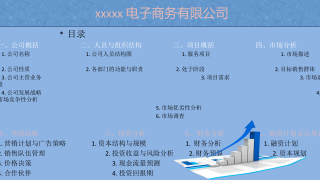
 2025-01-09 18
2025-01-09 18 -
xx生鲜APP计划书VIP免费

 2025-01-09 12
2025-01-09 12 -
跨境电商创业园商业计划书(盈利模式)VIP免费
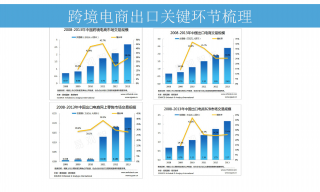
 2025-01-09 8
2025-01-09 8 -
跨境电商计划书VIP免费

 2025-01-09 13
2025-01-09 13 -
绿色食品电商平台项目计划书VIP免费

 2025-01-09 22
2025-01-09 22 -
农产品电子商务商业计划书VIP免费

 2025-01-09 9
2025-01-09 9 -
农村电商平台商业计划书VIP免费
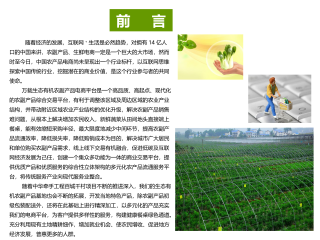
 2025-01-09 13
2025-01-09 13 -
生鲜商城平台商业计划书VIP免费
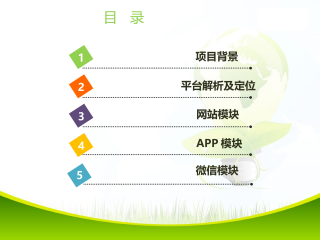
 2025-01-09 21
2025-01-09 21
作者:李佳
分类:高等教育资料
价格:150积分
属性:54 页
大小:420.5KB
格式:PDF
时间:2024-09-20


